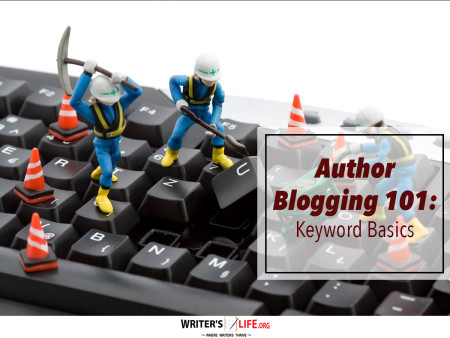- How To Tackle Jealousy In Creative Writing
- Common Submission Mistakes
- How To Stop Your Blog Becoming Boring
- The One Thing Every Successful Writer Has In Common
- How To Make Yourself Aware Of Publishing Scams
- Why Almost ALL Writers Make These Grammar Mistakes At Some Point
- 5 Tips For Authors On How To Deal With Rejection
- Top Mistakes to Avoid When Writing a Novel
- How to Avoid Common New Writer Mistakes
- 10 Mistakes New Fiction Writers Make
10 Ways to Make Your Opening Scene Unforgettable

An unforgettable opening scene is the key to capturing your reader's attention from the get-go, setting the tone for the rest of your story. Crafting such a scene takes skill, creativity, and an understanding of what resonates with readers. We'll explore ten dynamic ways to ensure your opening scene remains etched in their memories long after they've finished your book.
Understand the Power of First Impressions in Creating Memorable Openings
The first impression your story makes is pivotal. Opening scenes can make or break the reader's decision to continue with your narrative. A well-crafted introduction doesn't just draw readers in; it sets the groundwork for the relationship they'll have with your book. Consider starting with a vivid description or an intense action that leaves your reader craving more.
Capturing attention quickly is essential. Ask yourself: what makes this opening distinct? Whether it's through introducing a compelling character or presenting a profound conflict, your scene should spark curiosity and engagement right away.
Use Effective Opening Scenes to Establish Setting and Mood
Your opening scene should serve as a canvas, painting a clear picture of where and when your story takes place. By providing sensory details and specifics, you immerse your audience in a world that's believable and rich with context. Just like an artist who carefully chooses their palette, selecting the right words can make your scene come alive.
Consider how the mood of your scene impacts the reader's experience. Is it suspenseful, joyful, or melancholic? Use descriptive language to match the tone you're aiming to convey. This paves the way for a smooth narrative journey.
Introduce Compelling Characters in Crafting Opening Scenes
Compelling characters are the bedrock of unforgettable stories. In your opening scene, introduce a character or two who intrigue readers. Focus on unique traits or situations that make them relatable or irresistibly intriguing. Remember, a character with desires and conflicts is one whom readers will want to follow.
Crafting memorable characters involves more than just describing their appearances. It's about giving them depth and motivations, showing why their story deserves to be told now. This complexity invites readers to invest emotionally in the journey.
Hook Readers with Powerful Scene Beginnings
The start of your story should have a hook that grabs attention, much like a catchy chorus in a song. It could be an unexpected twist, a mysterious question, or a conflict that demands resolution. A powerful hook doesn't just entice; it secures a reader's attention for the long haul.
Think of the opening as an invitation—give your audience something they can't resist exploring further. As they read, they'll be eager to discover how intriguing elements introduced at the start unfold throughout the narrative.
Balance Description and Action Using Opening Scene Tips
Finding the right balance between detailed descriptions and action is key to engaging readers without overwhelming them. While richness in detail aids immersion, too much can slow down the narrative pace. Strive for a harmonious blend where every word serves the scene's greater purpose.
Imagine your scene as a movie: action keeps the plot advancing, while descriptions offer depth and clarity. Together, they cater to readers who love fast-paced dynamism, as well as those who savor visual storytelling nuances.
Mastering Scene Openings with Memorable Dialogue
Including dialogue in your opening scene can effectively showcase character dynamics and plot direction. Great dialogue doesn't just inform; it reveals insights about the speaker’s personality and the story's tone. Aim to use conversations that feel organic and reveal layers about your characters and their world.
Engaging dialogue is like music to the ears—it’s rhythmical and purposeful. It's an excellent tool for developing tension or humor, setting the pace for sagas yet to unfold.
Use Brilliant Opening Scenes to Foreshadow Future Events
Foreshadowing is a subtle yet potent technique for enriching your opening scene. By planting tiny seeds of future conflicts or outcomes, you develop a continuous thread that readers will pick up subconsciously. It's like a whisper of what's to come, an art form that keeps the audience guessing.
Successful foreshadowing is an art, not a science, and when done well, it'll ensure that every page turn is propelled by compelling curiosity about how these hints unravel later in the plot.
Inject Emotion to Ensure Your Scene Opening Stands Out
Emotion is the glue between characters and readers. Starting your story with an emotional punch—be it love, loss, or intense thrill—instantly builds a bridge between fiction and reader empathy. You're inviting readers not just to follow your characters, but to feel alongside them.
Tap into universal emotions that resonate with broad audiences. When readers sense authenticity and truth in your depiction, they’re drawn deeper into both character and narrative.
Experiment with Narrative Style for Ultimate Scene Openings
Why not break free from conventional styles and try something new with your opening scene? Whether it's a non-linear timeline, multiple points of view, or an unconventional narrator, experimenting with narrative style can create a remarkable entry into your story.
According to Wikipedia, various narrative styles can vastly alter the reader's journey. When done thoughtfully, unique storytelling methods become a compelling feature of your work.
Conclude with a Cliffhanger Within the Opening Scene
End your opening with a compelling cliffhanger, leaving your readers on the edge of their seats. This technique builds a bridge of tension spilling over to future scenes, ensuring readers are hooked beyond the first few pages. Think of it as the tantalizing trailer to your story's full feature.
Cliffhangers play a powerful role in storytelling, creating suspense and anticipation. To craft a striking cliffhanger, consider posing a question or presenting an unresolved situation that readers must keep going to find answers.
Want to promote your book after it's published? Check out our Book Marketing Articles.
Frequently Asked Questions About Unforgettable Opening Scene
Q: What makes an opening scene unforgettable?
A: An unforgettable opening scene captivates through compelling characters, intriguing settings, or powerful questions, establishing momentum for the story.
Q: How do I balance action and description in an opening scene?
A: Achieving balance means ensuring descriptions enhance rather than detract from pace, while actions are vivid enough to propel readers into the narrative's core.
If you're serious about growing your author career, don't miss out on these free tools and templates built specifically for writers. Access all 7 free resources here.



























